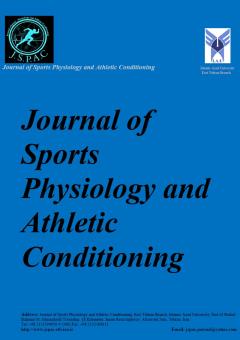Evaluation of the relationship pattern of (MOPC) and (APFT) tests in measuring aerobic power of military students
Subject Areas : آمادگی جسمانی
Hekmat Ehsan Baksh
1
![]() ,
Reza Sabzevari Rad
2
,
Reza Sabzevari Rad
2
![]()
1 - Department of Physical Education and Sport Sciences, Faculty of Basic Sciences, Imam Ali Officers' University, Tehran, Iran
2 - Assistant Professor, Department of Physical Education and Sport Sciences, Faculty of Basic Sciences, Imam Ali Officers' University, Tehran, Iran
Keywords: MOPC, APFT, aerobic power, military students,
Abstract :
Background: military forces must be physically fit to perform the task in order to perform their specialized function properly and with minimal casualties in completely different and critical situations. So the purpose of this study was Evaluation of the relationship pattern of (MOPC) and (APFT) tests in measuring aerobic power of military students. Materials and Methods: 25 Officer Students (21-25 years) were purposefully selected. At first, the MOPC (3mile run, MOB, Bench Press, Barfix, Back Squat, Simulated Casualty Evacuation Test) was performed. next stage was to perform the APFT functional test (540 m run, sit-ups, modified barfix, push-ups, sit -reach, 45 m run and agility with 4 x 9-meter test). The test was performed at the 10-day interval as MOPC. Thirdly, after one week of performing the main tests, respiratory gases (VO2, VCO2), RQ, lactate threshold (equivalent to 92% of VO2max), THR, intensity (VO2max%), O2pluse and aerobic power (VO2max) of subjects were assessed by Bruce's progressive and exhaustive test. the assumption of normality was verified using the Kolmogorov-Smirnov test. Also, linear regression analysis was used to examine the relationship between the two performance tests and Statistical analysis was performed at the significant level (p <0.05). Results: : Subjects' VO2max had a relatively weak correlation with MOPC (R = 0.26 and SEE = 0.05) and APFT (R=0.06 and SEE=0.18), which was not statistically significant. A moderate correlation(R=0.49) was observed between the two students' performance tests, however, this proportion was not significant with respect to the coefficient of determination (R2 = 0.28). Conclusion: However, having adequate aerobic power for the military forces indicates optimal levels of cardiopulmonary fitness. But in terms of the level of specialized performance when performing the test, it is not able to evaluate proper motor readiness It is therefore suggested that the components of military performance tests be reviewed and refined. by increasing Ceramide expression.


